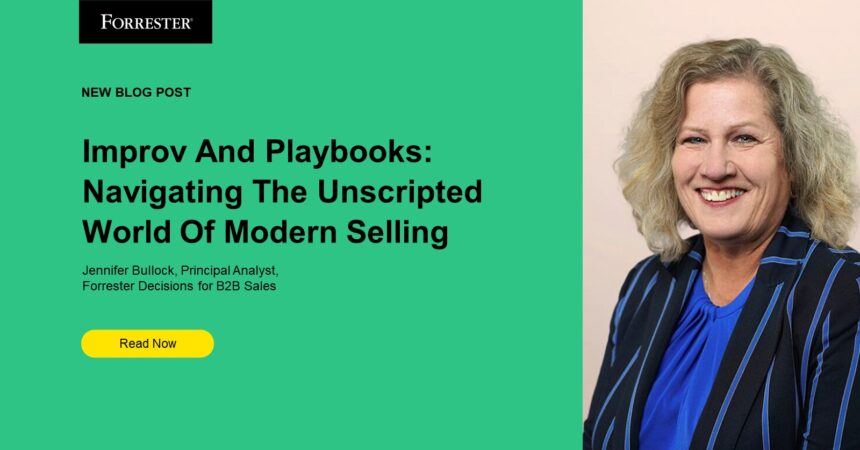
I’m from Chicago, which is known for many things, particularly its rich history with improvisational theater.
Improv is a form of theater performed unscripted and created spontaneously by the players on stage, often through an audience suggestion.
As a theatergoer, I am amazed at how much knowledge the actors must have to create something from any suggestion from the audience — current events, politics, books, movies, you name it.
As I became a student of improv, I was taught that there are some basic principles. As long as you hone those skills, no matter the audience suggestion, you can successfully advance the scene with your partners.
Some principles include:
- Yes, And! — Agree and add information.
- Active Listening — Pay attention to more than what words are being said.
- Collaboration — Trust, and make your partners look good.
So what does improv have to do with sales playbooks? When we create playbooks, isn’t what we’re really trying to do is help our salespeople move the scene — or conversation — forward, without complete knowledge of the direction in which it will go?
Although they span a diverse range of topics, scenarios, tools, and processes, sales playbooks have traditionally been designed to help sellers engage with buyers efficiently and effectively by sticking to preplanned motions. They would provide highly scripted guidance around a series of actions and sales motions, that reps would execute around a particular set of buyer behaviors and actions. Playbooks identified buyer roles and persona attributes in an attempt to tailor and personalize buyer-facing content and seller behavior to improve commercial outcomes.
But the rapid evolution of buyer expectations has made the selling process much more complex, with more buying personas involved in every stage. According to Forrester’s Buyers’ Journey Survey, 2023, 62% of B2B purchases now take place in complex buying scenarios that involve committees or consensus buying, with 52% of B2B purchases involving four or more departments. Sellers must understand the business needs of multiple buying personas and articulate value clearly and quickly with every interaction.
For reps to be successful in today’s customer-led buying environment, they must line up all aspects of a deal — multiple buying personas, multiple influencers, and endless combinations of issues and needs. The rigid format and structure of the playbook approach cannot help sellers pivot through all the variations of a modern sales motion. Certainly, by gathering assets and tools in one location, playbooks have served their goal of making sellers more efficient by reducing search time. As for the goal of making sellers more effective, however, playbooks have not evolved as rapidly as sellers’ needs.
That’s why I contend that evolution of the playbook is … not a playbook at all. It is more the idea of enabling sellers by guiding and supporting their conversations, based on a wide set of ever-changing commercial factors. Guided selling deconstructs digital playbooks, allowing buyer-relevant content to be pushed automatically to reps within their daily workflow. But rather than create an infinite number of bundled selling scenarios and struggling to maintain relevant content, revenue enablement professionals can support buyer/seller interactions by ensuring that reps have the necessary conversational skills to drive outcomes.
Today’s selling environment requires situationally relevant messages, content, and skills that give sellers the agility to have the right conversations — at the right time — that advance the deal. Skills and behaviors to leverage the content and tools provided must play a starring role.
Much like improv, all customer-facing roles require mastery of the skills to anticipate and thoroughly answer the questions that buyers are asking throughout the buyer’s journey. Skills such as active listening, consensus building, identifying subject matter experts to support questions they can’t answer, and highlighting success stories enable sellers to pivot through any interaction with buyers. Additionally, enablement teams must provide guidance around how and when to use specific messages, content, and sales tools. This type of guidance is missing in the traditional playbook approach and must take a front seat in guiding sellers throughout the buyer’s journey.
So maybe we need to refocus on the why of creating sales playbooks and get back to the basic principles of enabling customer-facing roles with the skills of moving the conversation forward and putting content in more of a supporting role.
And … “scene!”







